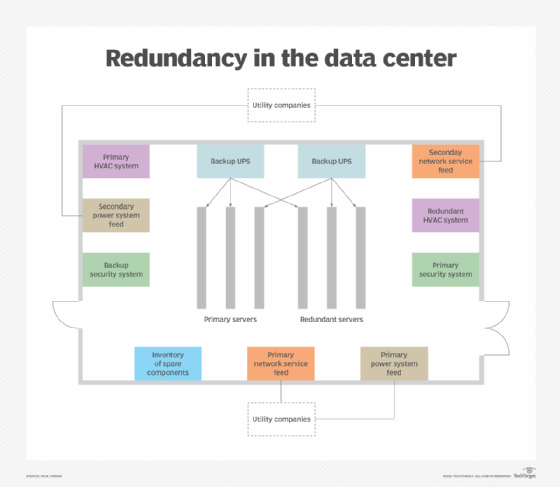Small Business Closing Employee Rights UK: What You Required to Know About Redundancy
Small Business Closing Employee Rights UK: What You Required to Know About Redundancy
Blog Article
Exploring the Operational Dynamics of Business Redundancy and Its Long-Term Sustainability

Redundancy Methods for Business Connection
In order to make sure continuous procedures, organizations should execute efficient redundancy strategies for company connection. Redundancy in this context refers to the duplication of essential components or functions within a system to reduce the effect of prospective failings. By integrating redundancy strategies, companies can improve their durability versus disruptions brought on by various variables such as all-natural catastrophes, equipment failures, or cyber-attacks.
One typical redundancy method is the execution of backup systems and information storage services. This includes developing duplicates of vital data and systems that can be triggered in situation of a key system failing. In addition, companies can develop repetitive interaction networks and power resources to preserve connectivity and operations throughout unanticipated events.
Additionally, cross-training workers to carry out multiple roles within the business can act as an important redundancy strategy. This ensures that essential tasks can still be brought out even if vital employees are unavailable due to ailment or various other reasons. Overall, reliable redundancy approaches are essential for organizations to support operational connection and lessen the effect of potential disturbances.
Impact of Redundancy on Business Durability
Given the essential function redundancy strategies play in making certain company continuity, checking out the impact of redundancy on organizational resilience comes to be necessary for comprehending the all natural operational characteristics of a company. Business durability describes an entity's ability to adapt to disturbances, recover from setbacks, and change when necessary while preserving core features. Redundancy, when strategically carried out, can substantially contribute to enhancing an organization's strength in the face of unforeseen obstacles. By having back-up systems, workers, or procedures in area, companies can better stand up to shocks and continue operations with very little disturbance.
In addition, redundancy can foster innovation and creativity within an organization as employees really feel encouraged to take calculated risks, recognizing that there is a security net to sustain them in case of failure. On the whole, the effect of redundancy on organizational strength is profound, forming the long-lasting sustainability and success of a company.
Balancing Performance and Versatility in Redundancy
Attaining a harmonious equilibrium between operational efficiency and adaptive adaptability is an essential difficulty in the calculated deployment of redundancy within organizations. Reliable operations are essential for preserving productivity and cost-effectiveness, guaranteeing that resources are used optimally. Nonetheless, excessive emphasis on efficiency alone can result in rigidity, making it difficult for organizations to adapt to unexpected adjustments or challenges. On the other hand, adaptability enables companies to respond nimbly to progressing conditions, fostering development and durability. Yet, also much flexibility without a solid functional structure can result in ineffectiveness and incongruity.
To balance performance and flexibility in redundancy preparation, organizations need to thoroughly assess their operational needs, market characteristics, and calculated goals. Inevitably, finding the ideal equilibrium in between efficiency and adaptability is vital for constructing a resistant and sustainable company in the face of uncertainty.
Long-Term Sustainability Through Redundancy Preparation
To make sure long-lasting practicality and security, organizations need to tactically straighten their redundancy preparation with long-term sustainability objectives, thereby integrating operational efficiency with adaptive adaptability. Long-lasting sustainability via redundancy preparation involves more than simply temporary cost-cutting actions. It calls for a comprehensive critical approach that anticipates future challenges and opportunities. Companies should view redundancy not as a reactive option to immediate issues however as a positive approach for long-term success. By integrating redundancy planning with sustainability goals, organizations can create a durable structure that can hold up against various market changes and inner changes.

Aggressive Measures for Sustainable Firm Procedures
Exactly how can firms proactively enhance their functional sustainability for long-term success? Executing positive procedures is important for business intending to make sure lasting operations. One essential approach is to buy technology and development to simplify procedures, minimize waste, and stay competitive in the market. Embracing lasting practices such as minimizing energy consumption, decreasing carbon impact, and enhancing resource application can not just profit the setting yet also lead to cost financial savings in the long run.
Moreover, fostering a culture of continuous improvement and discovering within the company can enhance versatility to changing market problems and consumer demands. Motivating staff member involvement in decision-making procedures and supplying opportunities for professional growth can improve morale, efficiency, and total performance. Developing clear goals, keeping an eye on essential performance signs, and regularly assessing progress are crucial components of positive sustainability monitoring.
Collaborating with providers, consumers, and various other stakeholders to promote lasting techniques throughout the supply chain can develop a ripple impact of positive impact - redundancy pay if company goes bust. By taking positive steps in the direction of functional sustainability, firms can construct strength, drive advancement, and protect their long-term success in an ever-evolving organization landscape
Conclusion

In the realm of business monitoring, the strategic implementation of company redundancy stands as an essential yet detailed method that necessitates who pays redundancy money a fragile equilibrium in between operational performance and long-term viability. By exploring the functional characteristics that underpin company redundancy and assessing its broader effects for organizational durability and adaptability, a nuanced understanding of how redundancy methods can form the future trajectory of a business begins to unravel.Given the critical role redundancy strategies play in ensuring business connection, discovering the influence of redundancy on business strength becomes vital for recognizing the holistic functional dynamics of a firm. On the whole, the impact of redundancy on organizational resilience is profound, forming the lasting sustainability and success of a business.
In final thought, comprehending the functional characteristics of company redundancy is critical for ensuring long-lasting sustainability.
Report this page